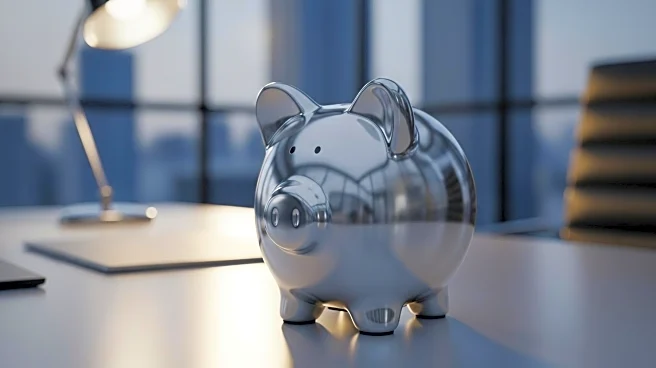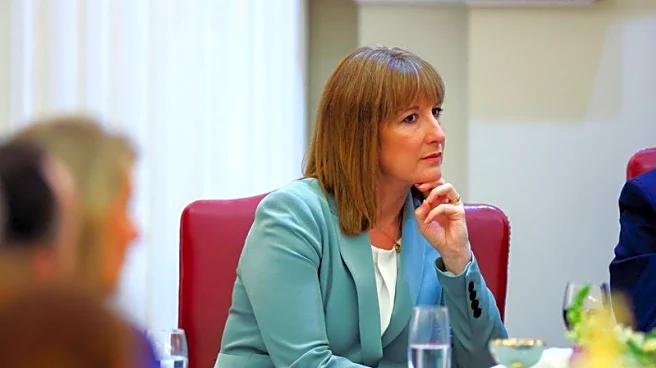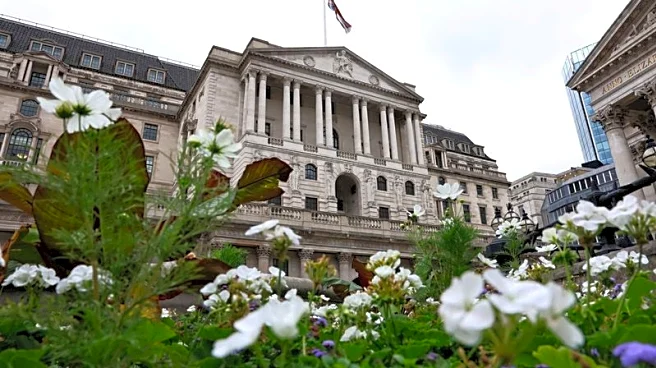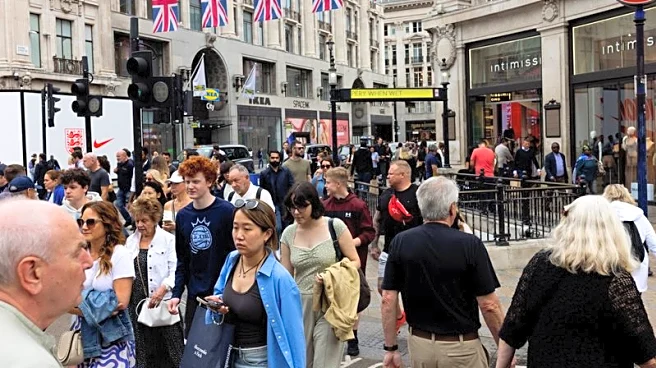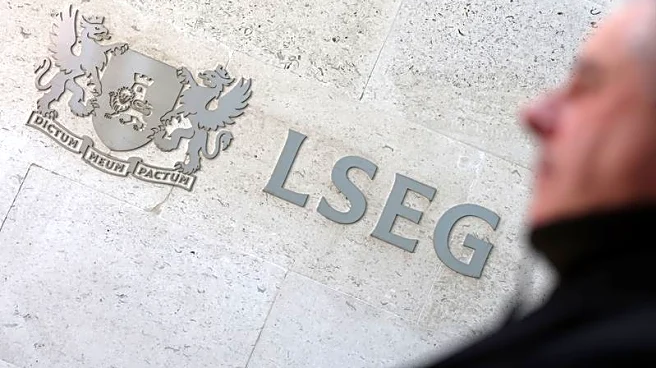What's Happening?
The Bank of England's recent base rate cut has positively impacted consumer confidence in the UK, as reported by Barclays Consumer Spend. The report indicates a rise in consumer card spending by 0.5% year-on-year in August, despite trailing the CPIH inflation rate of 4.2%. Discretionary spending categories such as clothing, furniture, and health and beauty saw a modest increase, suggesting consumers are prioritizing non-essential purchases. The report highlights a six-point rise in UK economic confidence to 28%, with household financial confidence climbing to 73%. However, concerns remain about the upcoming Autumn Budget, which could introduce significant tax increases, affecting consumer and retail confidence.
Why It's Important?
The rate cut by the Bank of England is crucial as it aims to stimulate consumer spending and economic growth amid ongoing financial pressures. The increase in consumer confidence suggests a temporary relief for households, potentially boosting retail and discretionary sectors. However, the looming Autumn Budget poses a risk, with potential tax hikes that could dampen spending and economic recovery. Retailers and consumers are bracing for possible increases in business rates and pension-related costs, which could lead to higher prices and reduced discretionary spending.
What's Next?
The Autumn Budget, scheduled for November 26, is expected to introduce measures to address public finance gaps, potentially impacting consumer spending and business operations. Economists suggest further interest rate cuts may be necessary to sustain economic growth. Stakeholders are closely monitoring fiscal policy developments, which could influence long-term economic stability and consumer confidence.




